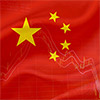Evolving Markets
Global macro outlook 2024
Much like this report in 2023, global conditions will remain unique and defy a confident overall summary; thus, here are ten predictions on some particularly noteworthy factors.
Global Investment Committee’s Outlook
We expect fairly rough sailing for the global economy, financial system and markets in the next two quarters, but we do not expect disasters and there should be major relief for stocks later in 2023 as central banks begin to ease policy.
Global Investment Committee’s Outlook
We don’t expect smooth sailing for the global economy and markets, but there should be great relief for both stocks and bonds in 2023, with pockets of strong outperformance due to idiosyncratic advantages. Notably, Europe and Developed Pacific-ex Japan should be overweighed for equites for the next six months, but Japan should perform the best by next December.
2023 Global macro outlook: Ten predictions
No single catch-phrase epitomises the 2023 global macro outlook, but here are ten predictions for the year ahead.
Our view on Japan’s upper house election
As it often is when Japan’s Liberal Democratic Party wins an election by an impressive amount, the initial equity market reaction was positive. But the ramifications of the ruling party’s upper house election victory will in the intermediate term be a function of what happens to the global economy and geopolitics in the months and quarters ahead.
“Stagflation-lite” coupled with a severe geopolitical crisis was much worse for equities than we expected, but most of the bad news is priced in, so the prospect for global economies and equities in aggregate should improve. While we expect global GDP to moderately underperform consensus, it should skirt recession and positively surprise equity markets, which increasingly have priced in recessionary conditions.
Navigating Japan Equities: Monthly Insights from Tokyo (May 2022)
We discuss the implications of the weak yen, now considered by some as a menace rather than a blessing, for the Japanese market and economy. We also explain the potential impact of higher energy and commodity prices.
Ground-level observations from China
A trip back to China provided an opportunity to experience first-hand the impact innovative technology and digitalisation is having on a fast-changing urban society.
The GIC expects the global economy to continue struggling in a form of “stagflation-lite” and sees a relatively flat performance for global equities for the next three to six months (although quite positive on Pacific equities), with moderate weakness for global bonds.
India: Reaping growth from change
Going back to India for a month after two long years of not being able to visit my family, I was pleasantly surprised by the new normal. While there has been much adversity, COVID-19 has also sparked positive change, especially on technology adoption.
Global Investment Committee's 2022 Outlook: Positive for risk assets
According to our Global Investment Committee, which concentrates on the intermediate term-view regarding developed markets for pension funds and other long-term investors, 2022 looks to be a challenging, but positive year for risk assets. We believe that the G-3 central banks will become more hawkish, and such pivots can often cause potholes and at the very least headwinds, but we trust that policymakers can traverse their new course successfully overall.
Global Investment Committee’s 2022 Outlook: Continue risk-positive, especially for Japan
The global economy should match the consensus for strong growth, thanks to vaccinations, continued fiscal stimulus, acceptable global geopolitical conditions, and continued low interest rates despite increasingly hawkish central banks. Such, via increased corporate profits, should allow equity markets to perform very well ahead, with impressive returns in each region, particularly in Japan.
Global Investment Committee’s 12-month Outlook: Continue risk-positive, especially for Japan
Out of the six scenarios presented, a narrow majority of our committee agreed again on a positive scenario in which the global economy matches the market consensus for solid growth, while equities continue to rally.
Out of the six scenarios presented, a solid majority of our committee agreed again on a positive scenario, in which the global economy matches the market consensus for very strong growth, while equities continue to rally.
Reaping big rewards in Asian small caps
Grace Yan, a Senior Portfolio Manager and a member of the Nikko AM Asian Equity Team, talks about the underlying reasons behind her recent success in winning Citywire Asia’s Best Fund Manager award and her passion about uncovering hidden gems in the Asian small-cap equity arena.
Net zero carbon: Is it all just hot air?
"Nowadays people know the price of everything and the value of nothing", quipped Oscar Wilde.
Japan Equity Monthly - April 2021
We gauge Japan’s slow vaccine rollout from an economic perspective and assess the shift in work styles that occurred during the pandemic and its potential impact on real estate prices.
Following a tumultuous 2020 marked by the COVID-19 pandemic, global growth in 2021 is expected to improve on the back of positive vaccine developments and continued government measures. However, the pace of recovery is likely to be uneven among economies and fears of a resurgence of COVID-19 linger. It would be presumptuous to say that we are finally out of the woods.
Japan Equity Monthly - March 2021
We provide our view on the Bank of Japan’s latest policy review, under which the central bank decided to allow long-term rates to fluctuate in a wider band and removed its annual target for ETF purchases. We also assess the barring of foreign spectators from the Olympic games.
Global Investment Committee Outlook: Continue risk-positive
A large majority of our members agreed on a positive scenario in which the global economy mildly outperforms market consensus, while equities continue to rally.
Japan equities poised for further gains along with a turnaround for value
In February 2021, Japan’s Nikkei Stock Average reached JPY 30,000 for the first time in over three decades. We believe that equities will keep rising, and that amid this shift in the broader market Japanese value stocks are on the cusp of a long-awaited turnaround.
Credit spreads explained: The devil is in the details
For corporate bond investors one of the most important points of discussion is spreads. Spreads are the industry term for the risk premium an investor aims to earn in the corporate bond market. It is the difference between the yield a bond is promising and the risk-free rate. If spreads are narrowing it is positive for investors as the price of the corporate bond will increase; likewise, a widening leads to a lower bond price.
Japan Equity Monthly - February 2021
We assess the factors that enabled the Nikkei to rise above the 30,000 threshold for the first time since 1990; we also view the recent Robinhood frenzy from a Japanese market perspective.
Meditation for investment professionals
The investment industry is constantly searching for ways to improve its decision-making processes. Some firms increase their research teams while others move into quantitative fields such as machine learning. Amid this constant search, we focus on an alternative way to enhance the quality of our decisions; mindfulness can make the difference between a rushed, emotional decision and a thoughtful, rational conclusion.
Ample upside room for slow recovering J-REITs
In 2020 the COVID-19 pandemic negatively affected a wide variety of Japanese assets, including the real estate investment trust (J-REIT) market. J-REITs have bounced back since, but their recovery has been sluggish compared to the Japanese equity market’s rebound. Despite the slower recovery, we believe J-REITs have ample upside room once the rise gathers pace.
Japan Equity Monthly - January 2021
We discuss Japan’s robust manufacturing sector and why it is not about reclaiming the past; we also take a look at the BOJ’s ETF purchases amid the current rally by equities.
Japan Equity Monthly - December 2020
We look into the potential economic impact of Japan’s attempt to become carbon neutral. We also analyse why Japan’s fiscal condition draws little attention although the country is on course to spend a record amount in its upcoming budget.
Global Strategy Thoughts for 2021
US capitalism was built on large societal divisions, but sometimes such becomes intolerable and the majority of the population revolts. In this case, the virus accentuated the income divide and engendered even greater angst. However, during the past four years, the majority fought back in different ways and ended up fighting each other, while the wealthy prospered more than ever, with high-skill workers reaping gains while lower-skill workers struggled and were often displaced, especially after the virus.
2021 Global Credit Outlook
The last 12 months have seen a significant rotation of topics discussed at investment meetings worldwide. The agenda has moved from macroeconomic data to infection rates, hospitalization rates, vaccinations and other issues related to the COVID-19 pandemic.
Investing for the Long Term: 'Future Quality' Companies
The Nikko Asset Management Global Equity team philosophy is based on the belief that investing in ‘Future Quality’ companies will lead to outperformance over the long term. This paper draws on academic evidence to outline the three fundamental concepts which underpin our definition of ‘Future Quality’ investments.
ESG in the investment process
Wealthy individuals across generations are interested in investing for environmental or social impact, but Millennials are by far the most active in evaluating and indeed, demanding these strategies.
Japan Equity Monthly - November 2020
The Japanese equity market has posted impressive gains as 2020 draws to a close, with the Nikkei Stock Average reaching a near three-decade high, and we assess the rise from a long-term perspective. We also analyse how Japanese equities have managed to defy a stronger yen.
China’s bond market: a space to watch
As China’s fixed income market continues to grow in depth and size, it has helped create interesting trends that are worth following. While some of these trends are not new, we do see finer developments within that could pique investor interest in realising additional alpha.
Bad Ideas Report
Today, we believe the global economy is undergoing the largest technological transformation in history. Disruptive innovation should displace industry incumbents, increase efficiencies, and gain majority market share. As technologies emerge and transform entire industries, investors in traditional benchmarks may face more risk than historically has been the case.


































